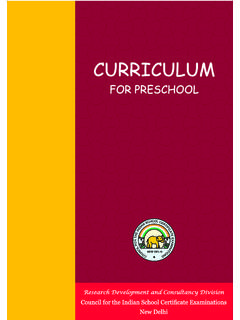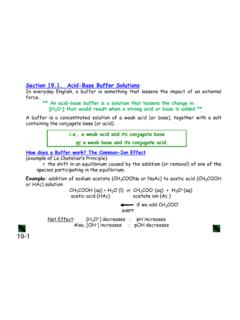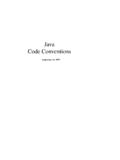Transcription of LB&I Concept Unit Knowledge Base - International
1 LB&I Concept Unit Knowledge base - International Document Control Number (DCN) ORE/C/19_02-01 Date of Last Update 9/24/2017 Note: This document is not an official pronouncement of law, and cannot be used, cited or relied upon as such. Further, this document may not contain a comprehensive discussion of all pertinent issues or law or the IRS's interpretation of current law. Unit Name Overview of Entity Classification Regulations (a/k/a Check-the-Box) Primary UIL Code Evaluation of Corporate transactions Library Level Number Title Shelf Cross-Over Book 19 Organization / Restructuring Chapter Evaluation of corporate transactions Section N/A N/A Sub-Section N/A N/A DRAFT 2 Table of Contents (View this PowerPoint in Presentation View to click on the links below)
2 General Overview Relevant Key Factors Detailed Explanation of the Concept Examples of the Concept Index of Referenced Resources Training and Additional Resources Glossary of Terms and Acronyms Index of Related Practice Units DRAFT 3 General Overview Overview of Entity Classification Regulations (a/k/a Check-the-Box) When a business entity is created, a determination must be made as to how the entity should be treated for income tax purposes (its tax classification). Some entities are treated as flow-throughs; their income, losses, and credits flow through to their owners and are subject to tax at the owner level, whether or not actually distributed.
3 Other entities, such as corporations (also known as associations) are subject to income tax at the entity level and then subsequently at the owner (shareholder) level when income is actually distributed to the owner. Prior to the entity classification regulations an entity s tax classification as a corporation or flow-through entity was determined by multi-factor Kintner regulations that enumerated six characteristics of a corporate venture and the classification turned on possession of more or less of the factors. T he application of these regulations was theoretically simple, but practically complex because of uncertainty in determining whether an entity possessed any given factor and the rise of limited liability companies and limited liability partnerships (LLCs and LLPs) which narrowed factor distinctions.
4 The IRS announced in Notice 95-14 its intention to simplify the entity classification process. Final entity classification regulations under IRC 7701, also known as Check-the-Box or CTB regulations, were generally effective January 1, 1997 for all domestic and foreign eligible entities. The regulations allow an eligible ( , not automatically classified as a corporation) entity to elect to be classified as a corporate (association) or a flow-through (partnership or an entity disregarded from its owner (DRE)) for income tax purposes. An entity is a deemed corporation if it is so formed under federal or state corporate statutes, or is a type of foreign entity found on a comprehensive list found in Treas.
5 Reg. (b)(8) ( per se foreign corporations). These entities are automatically classified as corporations and are not eligible to elect their classification. All other business entities are eligible to elect their classification. If no election is made, a default classification will apply, depending on the number of owners, and for a foreign entity, whether the owners have limited or unlimited liability. One of the results of the elective nature of the CTB regulations is that a foreign entity may be treated differently for tax purposes than the entity is treated under foreign law. An entity may be classified as a flow-through entity for in the tax purposes but as a corporation in a foreign tax purposes (commonly referred to as a hybrid entity ) or vice versa (a reverse hybrid entity ).
6 Issues regarding the use of hybrid entities in the context of the CTB regulations is the subject of future units. Back to Table of Contents DRAFT 4 Relevant Key Factors Overview of Entity Classification Regulations (a/k/a Check-the-Box) Key Factors Default classification if no election is made (Treas. Reg. (b)) eligible entities: (a) a partnership if two or more members [ , owners], or (b) a DRE if a single owner (Treas. (b)(1)) eligible entities: (a) a partnership if two or more members and at least one does not have limited liability, (b) acorporation if all members have limited liability, or (c) a DRE if a single owner without limited liability (Treas.)
7 Reg. (b)(2)) To elect an alternative classification, there are two factors needed under the CTB Regulations (Treas. Reg. 301-7701-1 through -3) entity (Treas. Reg. (a)), election (Treas. Reg. 301-7701-3(c)) There are generally three factors for an eligible entity: an individual, business entity (Treas. Reg. 301-7701-2(a)), and a per se corporation (automatically classified as a corporation) (Treas. Reg. (b); Treas. Reg. (a)) There are generally three requirements to make an election (Treas. Reg. (c)): properly completed and filed Form 8832 ( Entity Classification Election ) (Treas. Reg. (c)(1)), electing a change in classification within 60 months of the effective date of a prior election to change classification (Treas.
8 Reg. (c)(1)(iv)), by each owner-member or an authorized officer, manager, or member (Treas. Reg. (c)(2)) Upon certain entity ownership changes and in elective changes of classification, certain deemed steps take place to effectuate the change (Treas. Reg. (g)) Back to Table of Contents DRAFT 5 Detailed Explanation of the Concept Overview of Entity Classification Regulations (a/k/a Check-the-Box) The first consideration is whether the entity is domestic or foreign. Analysis Resources First, determine whether the entity is a domestic or a foreign business entity. A business entity is domestic if it is created or organized as any type of entity in theUnited States or under the laws of the United States or of any State.
9 A business entity that is created or organized both in the United States and in a foreign jurisdiction is a domestic entity. A business entity is foreign if it is not domestic. A determination of whether a business entity is domestic or foreign is made independently from the proper classification of that entity. The domestic vs. foreign determination must be done before the classificationdetermination because it is key to proper classification and election. Treas. Reg. (a)Back to Table of Contents DRAFT 6 Detailed Explanation of the Concept (cont d) Overview of Entity Classification Regulations (a/k/a Check-the-Box) If a business entity is domestic, certain classification defaults apply in absence of an election, unless the entity is a per se corporation.
10 Analysis Resources If no election is made, a domestic entity s default classification is determined as follows: A domestic entity which is not a per se corporation is an eligible entity classified as: A partnership if it has two or more members ( , owners), or A DRE if it has a single owner. A domestic entity is a per se corporation, not eligible to elect, if it is: Organized under a Federal or State statute (or a statute of a federally recognized Indian tribe) if the statute describes or refers to the entity as incorporated, or as a corporation, body corporate, or body politic; a joint-stock company or association; an insurance company; a State-chartered bank; an entity owned by a State, political subdivision, or foreign government; and a business entity that is taxable as a corporation under a provision of the Internal Revenue Code other than IRC 7701(a)(3).
















